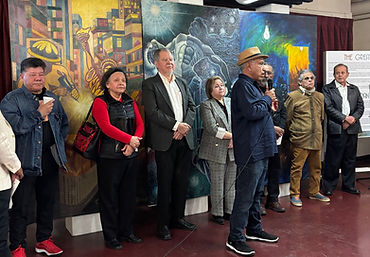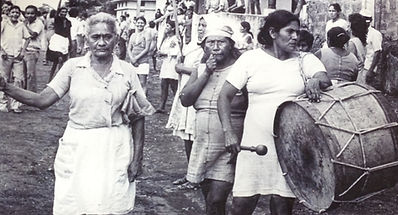Migration Waves
US Interventions and the Central American People’s Journey

Strengthening testimony-based education through practical digital resources, curriculum, and professional development for educators and students worldwide.


Migration Waves at Museum of Social Justice 2025.
CONFLICTS IN CENTRAL AMERICA
Guatemala’s Civil War, 1960–1996
On June 27, 1954, democratically elected Guatemalan president Jacobo Árbenz Guzmán was deposed in a CIA-sponsored coup to protect the profits of the United Fruit Company. This led to a multi-decade civil war and genocide resulting in the death and disappearance of up to 200,000 people.
El Salvador’s Civil War, 1980–1992
El Salvador’s civil war began in 1980 and ended 12 bloody years later. It saw extreme violence on both sides, including the terrorizing and targeting of civilians by death squads, the recruitment of child soldiers, and the death and disappearance of more than 75,000 people.
U.S. INTERVENTION AND MILITARY SPENDING
DISPLACEMENT/ IMMIGRATION
US IMMIGRATION LAWS AND REGULATIONS
Immigration Reform and Control Act of 1986 (IRCA)
This law legalized most undocumented immigrants who arrived in the US before January 1, 1984, leading to more than 2,500,000 people becoming permanent legal residents. Farmworkers who could prove at least 90 days of employment also qualified for legalization.
1990 Temporary Protected Status (TPS)
Established in the Immigration Act of 1990, temporary protected status provides temporary refugee protections for individuals from countries experiencing humanitarian crises, such as armed conflict or natural disasters. These protections allow them to live and work in the US safely while returning to their home country is unsafe.
.jpg)
American Baptist Churches v. Thornburgh Settlement Agreement (ABC)
The regular denial of asylum applications by Salvadorans and Guatemalans fleeing violence in their homelands during the 1980s prompted a legal challenge, which led to a settlement in 1991 that forced changes to US procedures for handling such cases.
Illegal Immigration Reform and Immigrant Responsibility Act of 1996 (IIRIRA)
This law recast undocumented immigration as a crime and fused immigration enforcement with crime control. Among its most controversial provisions, the law expanded the crimes, broadly defined, for which immigrants could be deported and legal permanent residency status could be revoked.
ARTISTS’ CONNECTIONS TO COMMUNITY ORGANIZATIONS
The artists’ life stories testify to the historical memory of the Central American struggles for justice and democracy. Their social activism transformed, in exile, into a struggle for asylum and refugee status and for belonging in their US communities.


.jpg)

_Image_of_Women_in_Revolution_-_Museum_of_the_Revolution_-_Leon_-_Nica.jpg)

_y_Rutilio_Grande_(al_lado_derecho)_c__1977.jpg)




.jpg)







.jpg)



.jpg)




